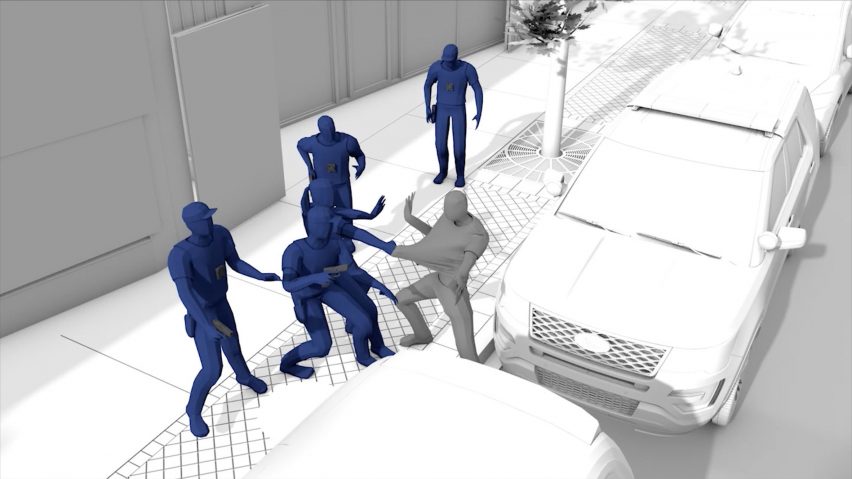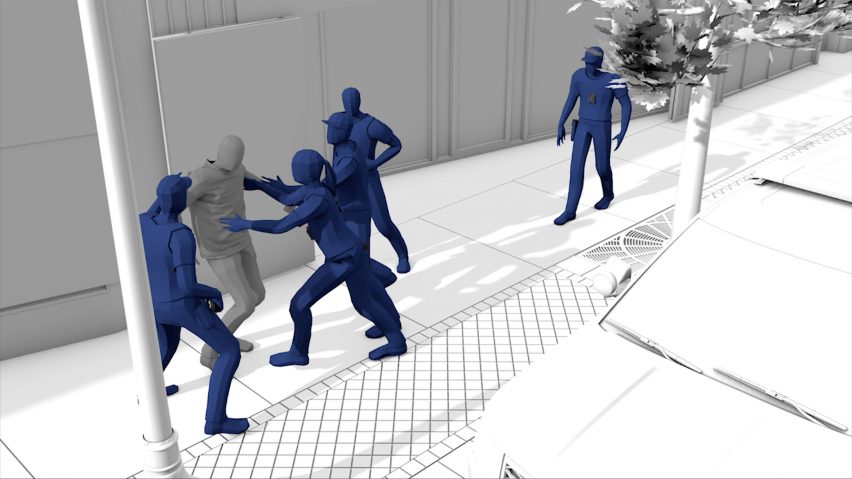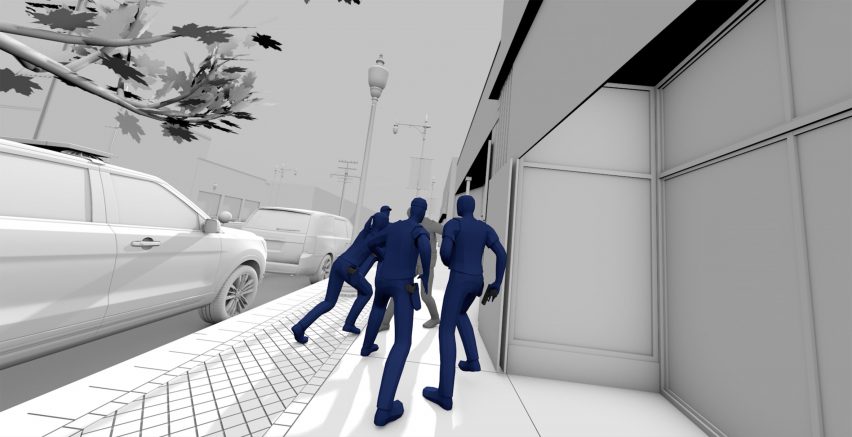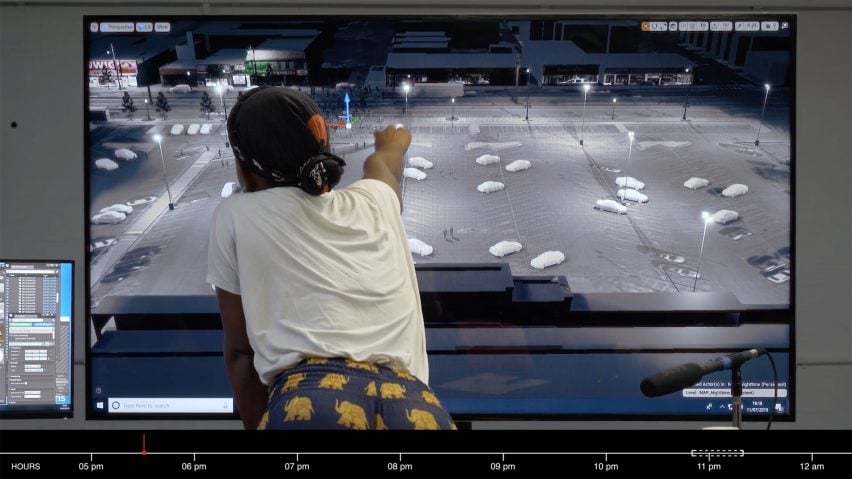
Forensic Architecture investigates Harith Augustus shooting in six videos
Forensic Architecture and Invisible Institute have created six videos that investigate the police's killing of African American barber Harith Augustus for this year's Chicago Architecture Biennial.
Turner Prize-shortlisted research group Forensic Architecture teamed up with Chicago's Invisible Institute to investigate the death of Augustus – a 37-year-old African American barber who was shot dead by the Chicago Police Department (CPD) on 14 July 2018.
The project aims to explore the police's "split-decision" to shoot Augustus, which it described as the result of an "armed confrontation", and its conduct following the event.
Called The Killing of Harith Augustus, the project is the latest real-world investigation led by Forensic Architecture, founded in 2010 by Israeli architect Eyal Weizman. Others include an explorations into allegations of links between human rights organisations and human traffickers, ethnic cleansing of the Yazidi people by ISIS in Iraq and the fatal Grenfell Tower fire in London.

Working with Invisible Institute, the studio has collated the results from project into a video series that explore Augustus' killing in six different units of time: milliseconds, seconds, minutes, hours, days and years. Each uses video footage of the incident and reconstructions to unpack different aspects of the event, including Augustus' movements, the CPD's decision to shoot and the protests following the event.
The series begins with Milliseconds, which questions the notion of the split-second decision of police office Dillan Halley, who shot Augustus five times, and the other four officers on the scene. The video uses frames from CCTV and police bodycam footage to show that Augustus was cooperating before turning his back to the police to run away, suggesting that he was not trying to shoot the police.
It also concludes that from a brief shot of Augustus lifting his top up to reveal a gun it is impossible to confirm if he was trying to shoot, or steady the weapon and run away.
The film also suggests that the police officer made a conscious decision to fire a fifth shot, as he takes a pause after shooting Augustus four times in quick succession. He shoots him a fifth time when Augustus is already on the floor.

Hours uses the account of Trina Reynolds-Tyler, an Invisible Institute researcher who attended the scene shortly afterwards, to reconstruct events following the shooting. It focuses on the violence that police used against a gathering of locals in a parking lot across from the scene of the shooting.
Days unpacks the police's handling of the evidence in the aftermath. CPD released two videos of the event called Aggravated Assault to a Police Office. One, which was distributed to news channels, is edited to zoom into a shot in which Augustus' shirt is lifted to reveal the gun, making it appear he was pulling it to use against police.
It also tracks events in which the Civilian Office of Police Accountability called for CPD to release all footage of the event. The force only made a dashcam video available one year after the incident, violating a protocol the police introduced after an officer was convicted for the 2014 murder of Laquan McDonald in the city.
"We demonstrated that construction of the official narrative started in the immediate aftermath of the incident and that the CPD distorted known facts and selectively released the videos in their possession, in an effort to deflect the public outrage provoked by the incident," said the studios.

Minutes highlights that none of the police turned on body-worn cameras at the appropriate time, and uses police statements and witnesses to add subtitles to the footage, while Seconds investigates the movements of the officers. The latter suggests that the moment when an officer grabs Augustus the incident triggers the event.
The fifth video Years is yet to be released but will investigate the incident through residents of South Side. "We examined the conditions that shaped the place in which Harith Augustus was killed: the persistence of hyper-segregation, the history of black armed self-defense, and the relationship of policing to the flow of life in the South Shore community," said the studio.
The Killing of Harith Augustus project is marked by an all-black installation at the Chicago Cultural Center, which forms the main hub of the Chicago Architecture Biennial, but the videos are only available to watch online.
This year's biennial, titled ...And Other Stories, is open to the public from 19 September 2019 until Sunday 5 January 2020. The Killing of Harith Augustus is among a number of projects in the biennial that aim to explore a wide-range of contemporary themes under one of four curatorial brackets – No Land Beyond, Appearances and Erasures, Rights and Reclamations, and Common Ground.
Imagery is courtesy of Forensic Architecture.